 History
History  History
History  Pop Culture
Pop Culture 10 Cases of Grabbing Defeat from the Jaws of Victory
 History
History 10 Common Misconceptions About the Renaissance
 Weird Stuff
Weird Stuff 10 Crazy Things Resulting from Hidden Contract Provisions
 Facts
Facts 10 Unusual Facts About Calories
 Weird Stuff
Weird Stuff 10 Days of Humiliation When the Person Should Have Stayed in Bed
 Humans
Humans 10 Surprising Ways Game Theory Rules Your Daily Life
 Food
Food 10 Popular (and Weird) Ancient Foods
 Animals
Animals Ten Bizarre Creatures from Beneath the Waves
 Technology
Technology 10 Unexpected Things Scientists Made Using DNA
 History
History 10 Events That Unexpectedly Changed American Life
 Pop Culture
Pop Culture 10 Cases of Grabbing Defeat from the Jaws of Victory
 History
History 10 Common Misconceptions About the Renaissance
Who's Behind Listverse?

Jamie Frater
Head Editor
Jamie founded Listverse due to an insatiable desire to share fascinating, obscure, and bizarre facts. He has been a guest speaker on numerous national radio and television stations and is a five time published author.
More About Us Weird Stuff
Weird Stuff 10 Crazy Things Resulting from Hidden Contract Provisions
 Facts
Facts 10 Unusual Facts About Calories
 Weird Stuff
Weird Stuff 10 Days of Humiliation When the Person Should Have Stayed in Bed
 Humans
Humans 10 Surprising Ways Game Theory Rules Your Daily Life
 Food
Food 10 Popular (and Weird) Ancient Foods
 Animals
Animals Ten Bizarre Creatures from Beneath the Waves
 Technology
Technology 10 Unexpected Things Scientists Made Using DNA
10 Horrifying Facts About American Eugenics
One of the main goals of the Third Reich was creating a so-called Master Race. It was a horrible time in history, and something we can look back on in sadness. But contrary to popular belief, the Third Reich didn’t invent the idea of a Master Race, or of eugenics—America did. Several decades before the movement caught on in Germany, Americans were flaunting their Caucasian genes and the “Better Babies” they would bear, and sterilizing those deemed less worthy of a family. It was a terrible program, about which Hitler would later say, “There is today one state in which at least weak beginnings toward a better conception are noticeable. Of course, it is not our model German Republic, but the United States.” And it didn’t even end after World War II.
10 What It Was

The American Eugenics Society was an organization that began in the United States in the early 1900s. Its mission included not just segregation, but a racial cleansing and the establishment of a strong, pure race untainted by the blood of those that were deemed lesser, whether by race or by disability. That meant the practice of forced sterilization for those who were deemed unfit to have a family, such as those with learning disabilities or those in institutions. It also meant forbidding interracial marriage and, as we’ll cover, the forced sterilization of orphans, cripples, and the “feeble-minded.”
The theories behind the practice came from the work of Charles Darwin and his cousin, Sir Francis Galton. Galton theorized that if only the best and the brightest married each other and bore children, it would elevate the human race. And in America, a country still torn by racial tensions and the reminders of a Civil War and the end of slavery, it was exactly the sort of thing those self-proclaimed best and brightest could seize upon.
A 1911 treatise called “Preliminary Report of the Committee of the Eugenic Section of the American Breeder’s Association to Study and Report on the Best Practical Means for Cutting Off the Defective Germ-Plasm in the Human Population” presented bullet points on just how they proposed going about this project. Included were suggestions for euthanasia and gas chambers.
And some of the views were, frankly, pretty visceral. Oliver Holmes, a Supreme Court Justice, famously said, “It is better for all the world…three generations of imbeciles are enough.”
9 30 States And 60,000 Victims

At the height of the movement, 30 states had adopted legislation that legalized the sterilization of individuals deemed unfit for reproduction. In most states, that meant the mentally ill or mentally deficient. By the time all was said and done, somewhere in the neighborhood of 60,000 people had been forcefully sterilized in state-sanctioned procedures. In some states, such as California, sterilization records are incomplete or often altered, making it impossible to truly know how many people were subjected to the procedures. It was done to men and women, Caucasians as well as individual from other and mixed races.
State laws in California included permissions for those who were in prisons to be eligible for sterilization, as well as those found to have any chance of carrying hereditary dementia or insanity. The laws also removed the patients’ rights to contest the procedure, although it was still necessary for parents to consent to the sterilization of their minor children. In the years between 1921 and 1950, roughly 450 people were sterilized in California each year.
8 Feeble-Minded, Deaf, And Orphans

The American eugenics movement had a very specific desire when it came to creating the perfect, pure race. Not only were they tall, intelligent, and talented, but they were blond-haired and blue-eyed. Sound familiar? It was described as a “Nordic” race in America, and it was the Aryan race in Germany. That meant weeding out everyone who wasn’t that . . . and while the American version never went as far as the German, the roots were there.
While Alexander Graham Bell targeted the deaf, and laws on the whole targeted the sexually deviant offenders and the mentally ill, there was another sub-group who fell victim to the forced sterilization procedures. In California, all it took was a doctor to deem you “unworthy” to have the procedure done. And in some cases—as late as 1963—that could simply mean you were an orphan. Men like California’s Charlie Follett were sterilized against their will as children; Follett’s only crime was to be born to alcoholic parents who could not support him, leaving him a ward of the state.
7 Supported By Alexander Graham Bell And The Rockefellers
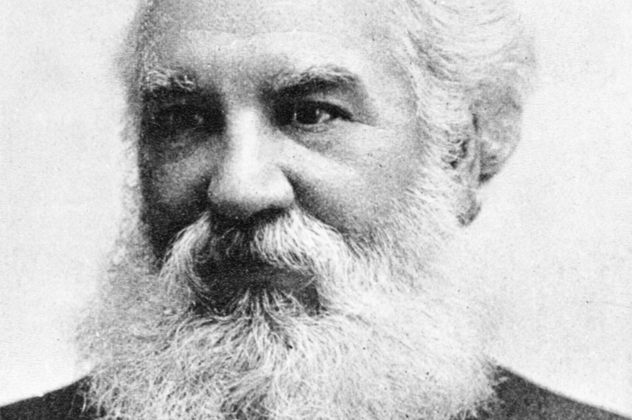
An appalling number of people supported the movement, in voice and in finance. Alexander Graham Bell was a staunch supporter of the movement, and thought that deaf people should not be allowed to marry. Many eugenics projects got their financing from some of the corporate moguls of the day, including the Carnegie Institution, the Rockefeller Foundation, and the Harriman railroad conglomerate. In fact, the Carnegies founded and funded the Cold Spring Harbor research facility, one of the largest centers of eugenics activities (more on that in a minute). And it was the Rockefellers who put up the money behind a branch of eugenics in Europe—that was a German branch that counted Joseph Mengele in its ranks.
They also funded organizations like the German Psychiatric Institute, which in turn gave rise to one of Hitler’s most instrumental minds in medical repression, Ernst Rudin. The United States Supreme Court was also on board, upholding the laws of the eugenics movement, and one of the leaders of the American eugenic movement, Madison Grant, received a fan letter from none other than Adolf Hitler, praising his work as inspiring. While much of the financial support of families like the Rockefellers ended before the official beginning of World War II, they had already helped set things in motion.
6 The Racial Integrity Act

The Racial Integrity Act of Virginia was established in 1924. The purpose was to document the race of every person in the state, allowing for a massive genetic database to be created. The database was necessary for the rest of the law—making sure that someone whose heritage was purely white married only another similarly pure person.
State Registrars were forbidden from issuing a marriage license unless the man and the woman in question could both produce such a certificate stating that there was no trace of any race other than Caucasian in their ancestry. If the clerk had any reason to doubt that the racial profile was accurate, they didn’t have to grant a marriage license, either—not until both parties submitted proof that they actually, truly were white. Lying about your race on the form was a felony, and could be punished by up to a year in jail.
5 Cold Spring Harbor Laboratory
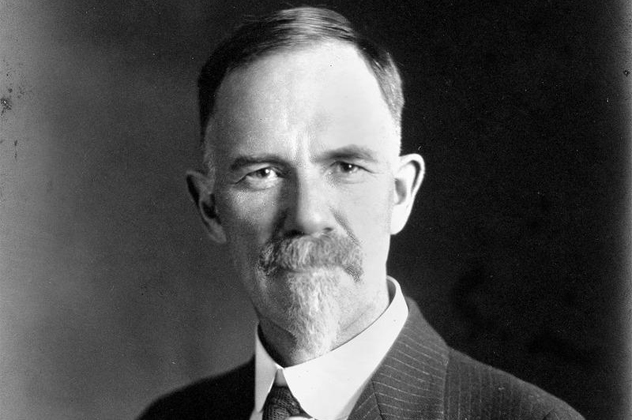
The Cold Spring Harbor Laboratory is still around, located in Cold Spring Harbor, New York. Now, it’s a research facility in the fields of neuroscience, plant biology, quantitative biology, and, not surprisingly, genomics. It was originally opened in 1910 by Charles Davenport, and was known as the Carnegie Institute of Washington. The Eugenics Record Office kept detailed family records that allowed field workers to trace cases of mental and physical defects through a family line.
Davenport also conducted studies on the importance of other inherited traits, such as hair and eye color, hair texture, and skin pigments. In addition to physical traits, they also tried to document how chronic diseases such as hemophilia and mental disorders like schizophrenia, along with what they called “feeble-mindedness,” were passed through a family.
4 The Immigrant Problem
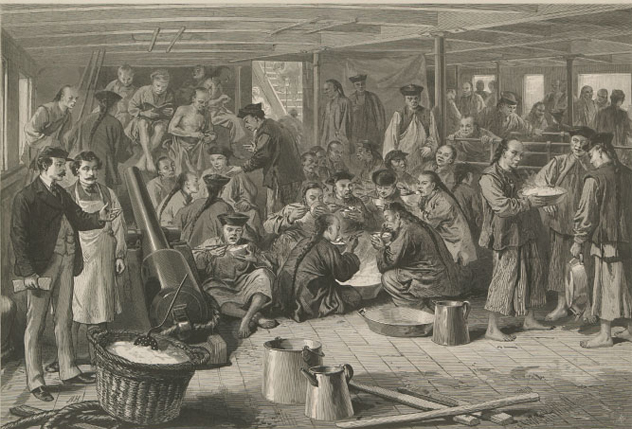
Those that supported eugenics looked to immigrants as a problem variable that was introducing all sorts of new and undesirable genetic qualities into the American gene pool. Researchers at the Cold Spring Harbor Laboratory isolated some of the problems. For example, those with Italian blood were said to be prone to violence. As part of their research, prison and mental institution populations across the country were surveyed to find out just how many members of these populations came from what immigrant group.
After outbreaks of illnesses like smallpox and cholera in New York City and immigrant-hub Ellis Island, the work of the eugenics movement began to gain credence. By 1911, they were operating hand-in-hand with the Immigration Restriction League to influence Congress and the Surgeon General to implement restrictions on immigration.
3 Better Babies And Fitter Families Contests

As the eugenics movement took off, state fairs across the country started holding Better Babies contests. In some respects, it made sense. Mothers were encouraged to bring their babies to fair judging contests, and in much the same way as livestock was judged, babies would be judged on things like health, weight, and size. While it also helped promote health and good child care, the “this isn’t so bad” part of this entry ends right about there.
Better Babies soon evolved into Fitter Families, a contest where whole families would present judges not only with their happy, healthy babies, but with an abbreviated version of their racial pedigree. Doctors would perform examinations on all the members of the family, awarding and deducting points according to guidelines, and families were given a letter grade to show just how eugenics-friendly their family was. Winners would be rewarded with medals and trophies in these contests, which remained hugely popular throughout the 1920s.
2 Pioneered By A Stanford Professor
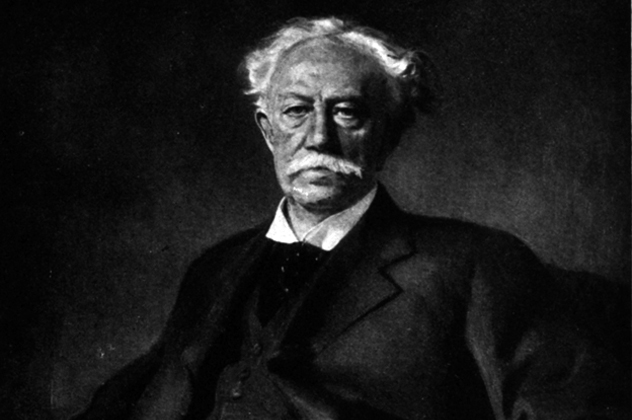
The whole thing was started by a Stanford professor named David Starr Jordan. A long-time student of Charles Darwin and the ideas of natural selection and Mendelian genetics, Jordan grew up in Western New York and pursued an education in botany and science. After teaching at a number of different universities, it was when he went to Stanford that he truly began preaching his values, including education, conservation, and eugenic breeding.
After writing several books on the topic of eugenics, he was one of the founding members of the Eugenics Committee of the American Breeders Association and the Eugenics Record Office. Chief among his beliefs was that the upper class of America was being constantly eroded by the lower class, and that careful, selective breeding would be necessary to preserve the country’s upper crust.
1 Inspired Hitler’s Master Race
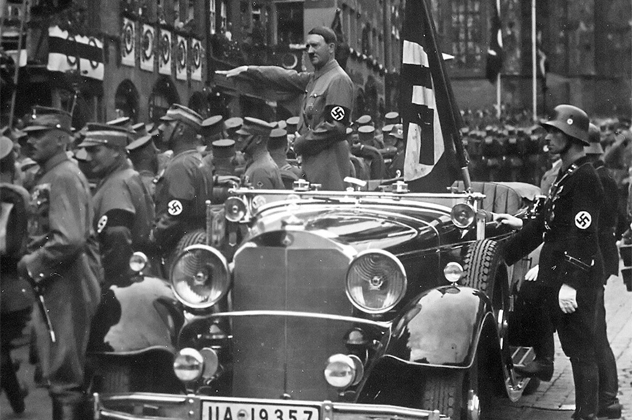
We’ve mentioned it once already in brief, but it’s worth revisiting again in greater depth. The American eugenics movement formed the basis for the Third Reich’s belief in a Master Race and their attempts to create one. There was a bizarre sort of mutual respect that went on between American eugenics supporters and the Nazi party. In 1937, the American Eugenics Society issued statements of praise for the work that the Nazis were doing to cleanse the gene pool. For them, the scale on which the Nazis were carrying out their mass sterilization was what they had wanted for America.
Original writings of eugenic supporters spoke of cleansing the American population by methods ranging from gas chambers to simply leaving the lower classes to the mercy of the elements or to disease; they went on to lament that American society wasn’t ready for such a wide-spread, sweeping cleanse and saluted the Nazis for doing exactly what they had wanted for their own country. Hitler’s fondness for the theories and science behind American eugenics was clear; he would not only quote American texts, but use them as evidence to support his madness and to recruit others to his cause.








